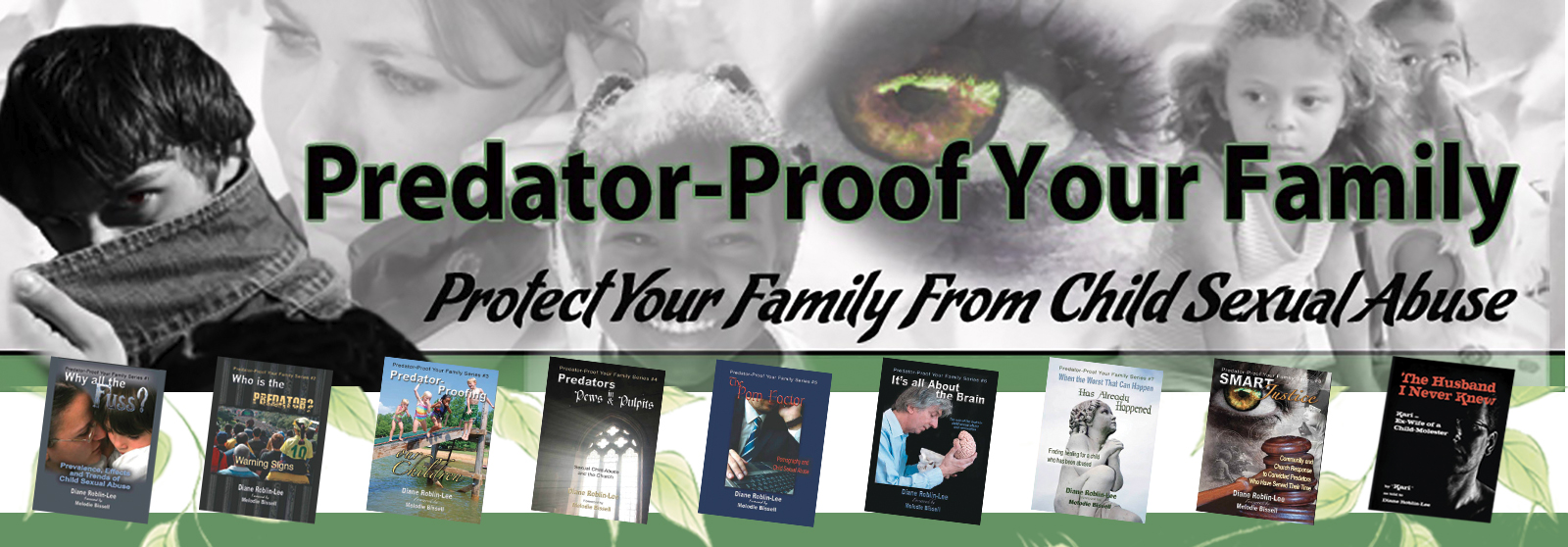It was a quiet day – not much action at the craft show, causing an underlying rumble of dissatisfaction among the vendors. I saw a large, rather depressed looking, elderly woman approach my table. She cast a cursive glance across my piles of titles and then stopped, with an almost noticeable startle, as she read some of the titles on my Predator work. She picked up Predators Live Among Us, stared at the front cover for a long moment, turned the book over and appeared to read every word on the back. She went through the same process with all eight Predator-Proof Your Family booklets. Lingering at that area of the table for a good 15 minutes, she finally sighed and began to walk away as if to say nothing could fix the broken places inside.
Sensing this was a meaningful encounter beyond the obvious, I attempted to engage the woman in some light, non-threatening conversation. Before long, she asked me if I was the author of “those books.” I smiled, said yes and made some general comments about my experience with the effects of abuse on individuals and families.
Before long, a spark of life made its way through her heavy despondency and opened the way for her to begin to share her story. She was divorced, the ex-wife of a man so frustrated by life that he lived in a fog of alcohol binges and chain smoking. Prior to the divorce, they lived out in the middle of nowhere. Their days were filled with struggle, fear and insecurity. Although they had a daughter, there was no joy in the home. Relationships were fraught with tension. As soon as the girl was old enough, she left home and, once safely away, told her mother of the abuse she had suffered at the hands of her father for many years. Horrified, but too frightened to confront her husband with her knowledge, the woman knew she had to get out. It would be another betrayal of her daughter for her to stay.
She finally summoned the courage to tell her husband she was leaving him. He flew into a rage, grabbed his gun and refused to let her leave. For three days, he held her captive in their home at gunpoint. On the third day, he ran out of cigarettes, grabbed her car keys so that she could not escape and said, “Yer not goin’ nowhere!”
He didn’t know she’d had a second set of keys made. As soon as his car was out of sight, she called her girlfriend and burned it down the lane way, never to return.
That all happened about 40 years prior to our chance meeting. The abuse had never been reported. The abuser had gone on with his life, remarried and was now a crossing guard, helping little children to cross the street. The daughter had never had closure and remained distant from her mother.
As we talked, I impressed upon the woman the importance of breaking her silence, getting the man removed from his position of trust and encouraging her 55-year-old daughter to file charges and get some closure. Without names, I had to trust that she would break through the years of despondency and victimization and deal with the situation.
Last Saturday morning, I was having coffee and reading the morning news. The phone rang. I didn’t recognize the voice. A woman said, “You might not remember me, but we spoke at a craft show last year. You gave me a bookmark with your number on it and said I could call. I just want to thank you for your words that day. After we spoke, I talked with my daughter and we called the police and filed charges. So far, he’s denied it, but he’s been removed from his crossing-guard job and now it’s in the hands of the law. You wouldn’t believe the change in my daughter. It’s like she’s a new person. Our lives are changed. My husband is finally going to pay for what he did to her and she doesn’t have to carry the weight of his secrets anymore. Thank you so much for your words that day.”
When silence is broken, the mending begins.
© Diane Roblin-Lee – Oct. 15/12

